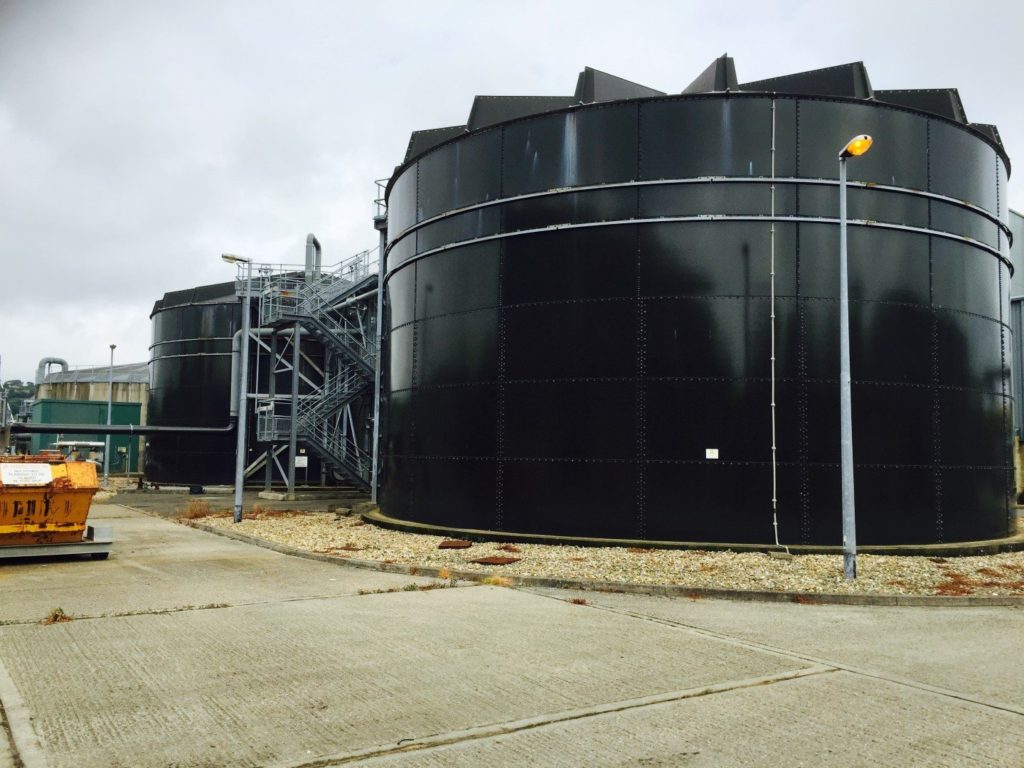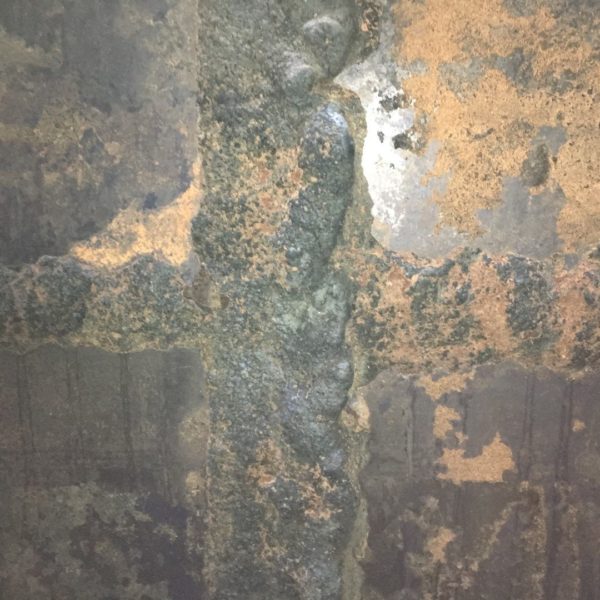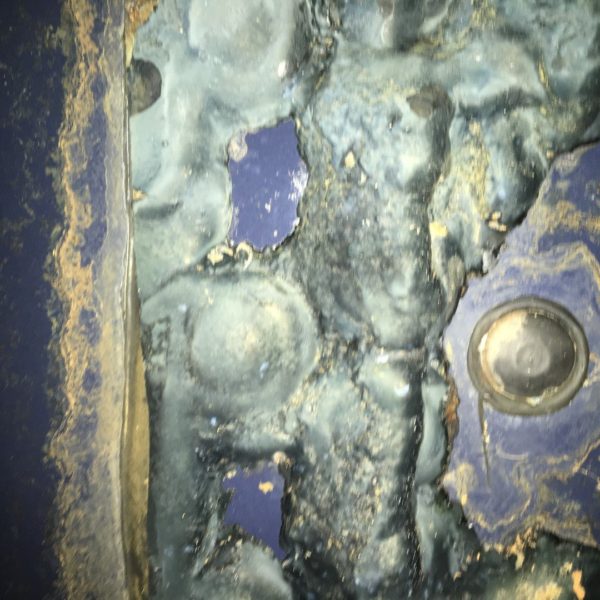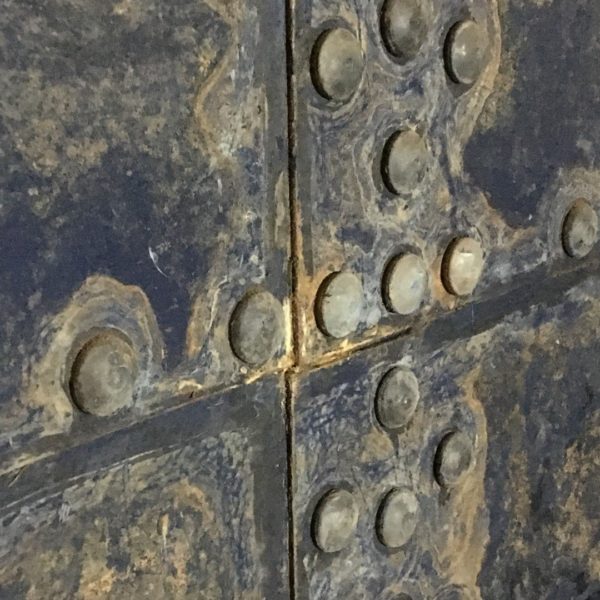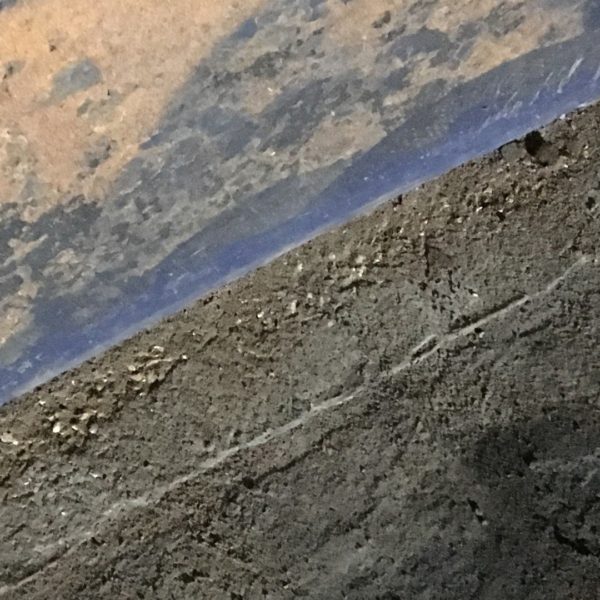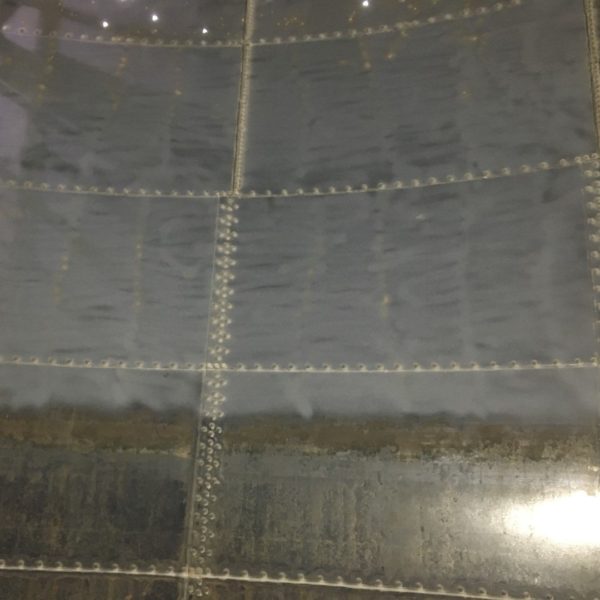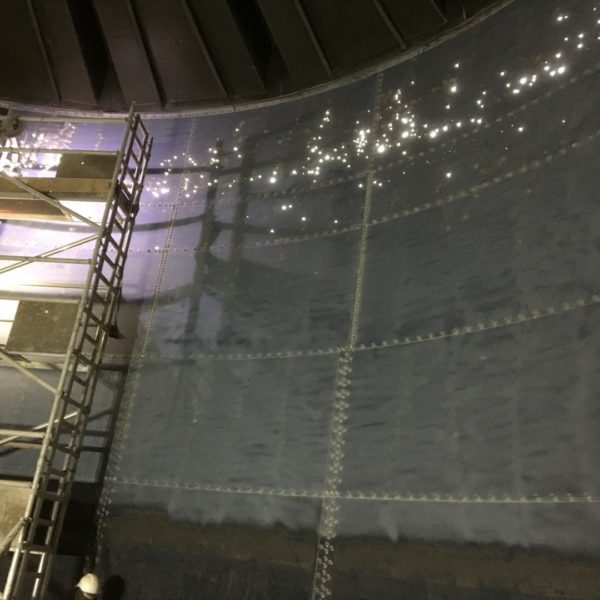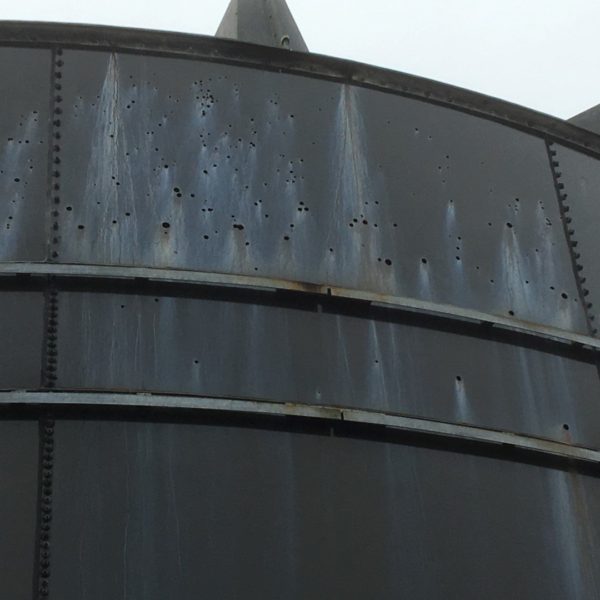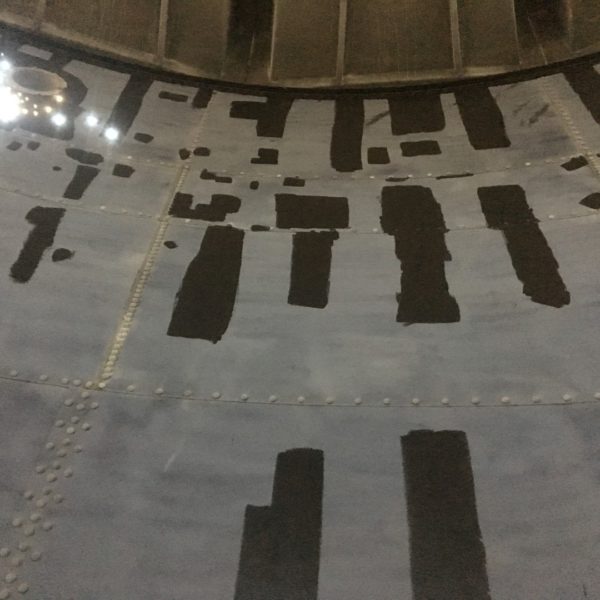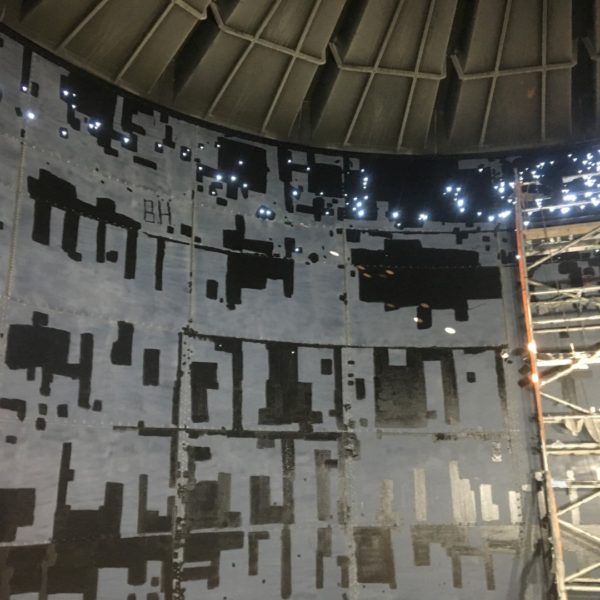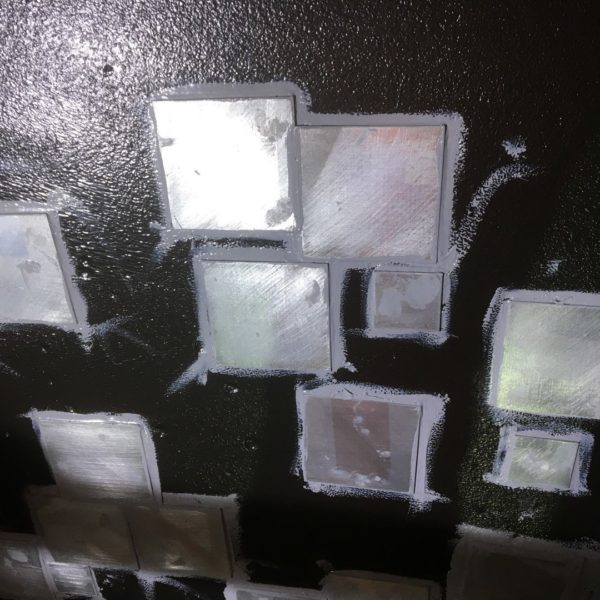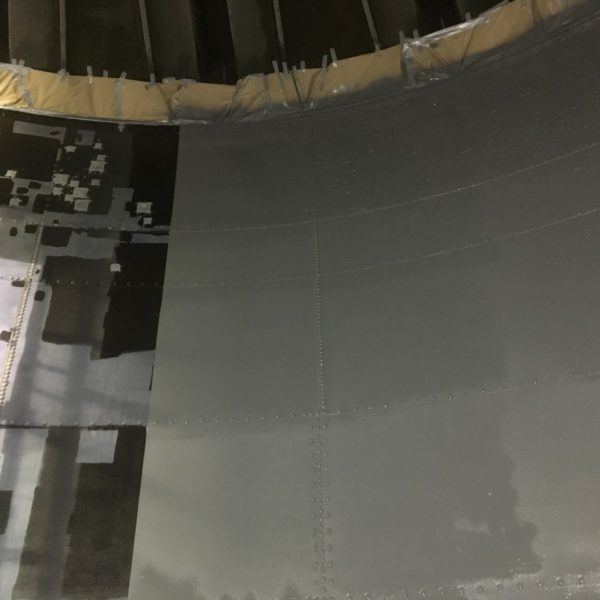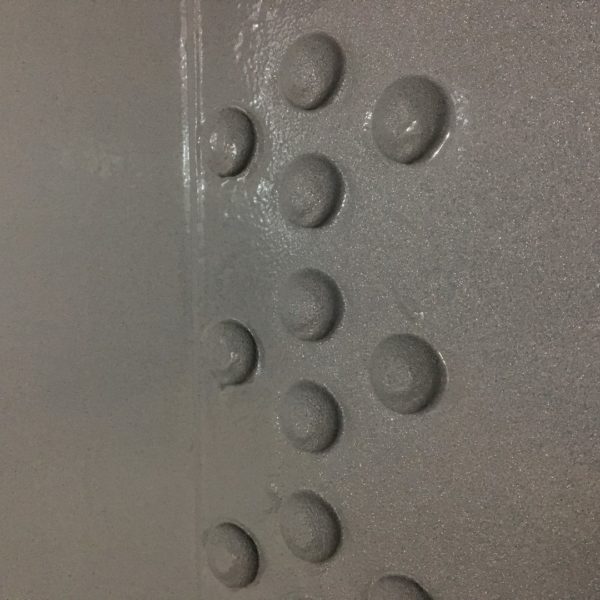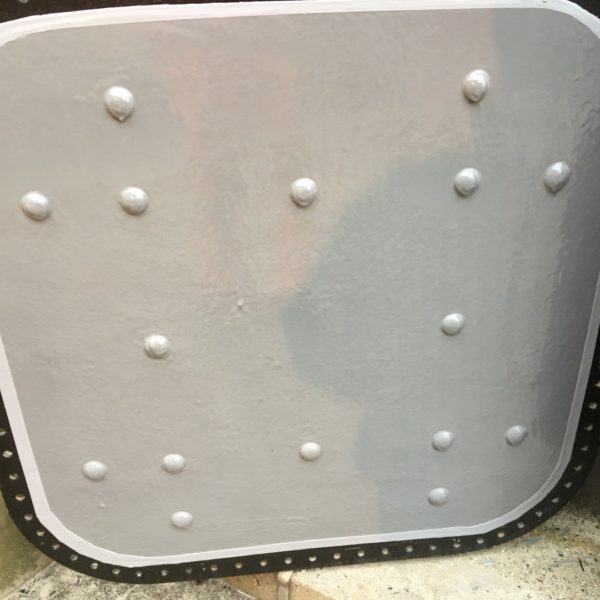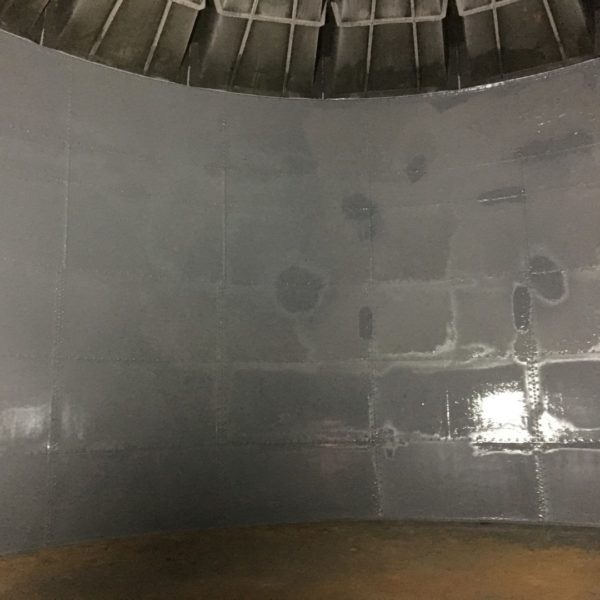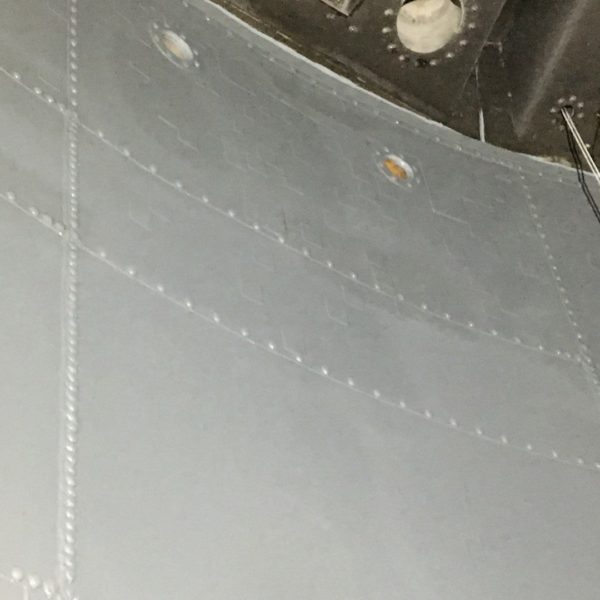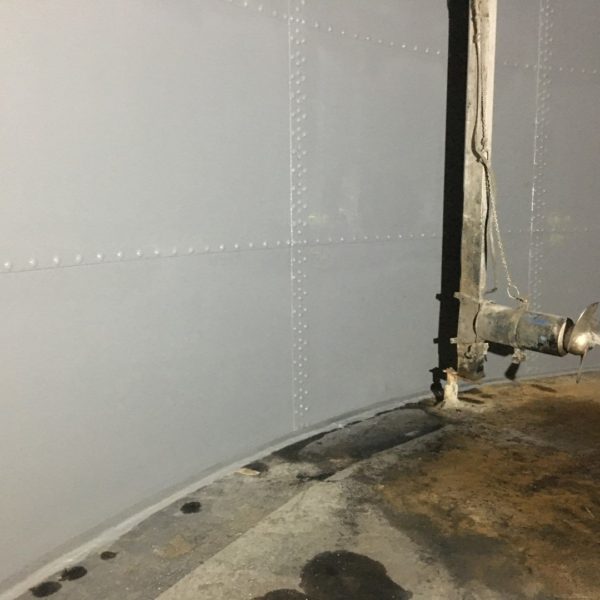THE PROBLEM
The sectional glass enamel tanks were not able to be filled to maximum capacity due to extensive perforations as a result of hydrogen sulphide attack. Replacement had been considered but cost effective alternatives were also being looked at.
THE SOLUTION
We proposed the application of seamless spray applied polyurea lining from market leaders SPI in the form of Corrolastic UB with their AE4 adhesion promoter. We recommended the application of this material due to its combination of flexibility, chemical resistance and high tensile strength. Using a flexible lining material in these type of tanks is important due to the potential movement that can occur when emptying and filling which can crack brittle coatings such as epoxy and fibreglass.
Following the cleaning of the tanks by others we first removed the old sealant from the bolt heads using our own in house ultra-high pressure water jetting unit. This piece of equipment also proved particularly useful in removing the old bitumen sealant that others had previously applied to the lower two panels vertical bolts for reasons unknown. It is important to remove the old sealant material prior to applying a new tank lining as often corrosion is hidden in these areas, which if left untreated will undermine the new tank lining. Often less experience contractors will make the mistake of thinking the fantastic performance properties of polyurea can make up for poor preparation.
Testing the tank for soluble salts
The tank internals were then tested for soluble salts as per our standard quality assurance. If present failure to remove these will lead to osmotic blistering in the new tank lining, again leading to premature failure and corrosion. It is important to remove soluble salts if present prior to abrasive blasting as if present this can force them further into the substrate.
Following the passing of the salt test the tank internals were prepared by method of abrasive blasting using recycled glass media. Because the polyurea we had recommend contained SPI’s AE4 adhesion promoter which bonds tenaciously to silica containing substrates such as glass enamel, it was not necessary to remove the glass enamel in its entirety which would have proved extremely difficult and expensive. Furthermore by leaving sound glass enamel in place the corrosion protection properties of this are retained.
The blast profile was checked and recorded as part of our standard quality assurance, with a minimum surface profile of only 25 microns being required. Any areas of exposed steel were prepared to SA2.5.
Applying the polyurea
To avoid costly permanent heating and dehumidification exposed steel was primed using Corroless EPF rust stabilising epoxy primer which has been supplied with all new Permastore tanks for over 20 years.
As per best practice an anchor rebate to terminate the polyurea lining into was cut in the concrete slab around the circumference of the slab using a vacuum controlled floor saw.
Prior to the application of the polyurea tank lining a bead of polyurethane jointing compound was installed at the floor wall intersection to isolate this point of potential movement from the polyurea lining.
To bridge the numerous perforations in each tank galvanised steel plates were bonded in place using a thixotropic epoxy adhesive. In total there were over 1000 perforations per tank!
Applying the Speciality Products Corrolastic UB
Once satisfied with the preparation, priming and plating works SPI Corrolastic UB was spray applied to a thickness of 2mm throughout. Particular attention was given to the stripe coating of the thousands of bolt heads to ensure that they were properly sealed. Spraying details such as these can be challenging in order to avoid the formation of cavities and voids.
The installed polyurea lining was then tested for pin holing using a DC holiday spark tester as per our standard quality assurance. For these tanks the client also appointed a third party tester.
The completed lining has an expected service life in excess of 30 years and came with a 10 year installation warranty from ourselves and a 20 year material guarantee from the manufacturer.

